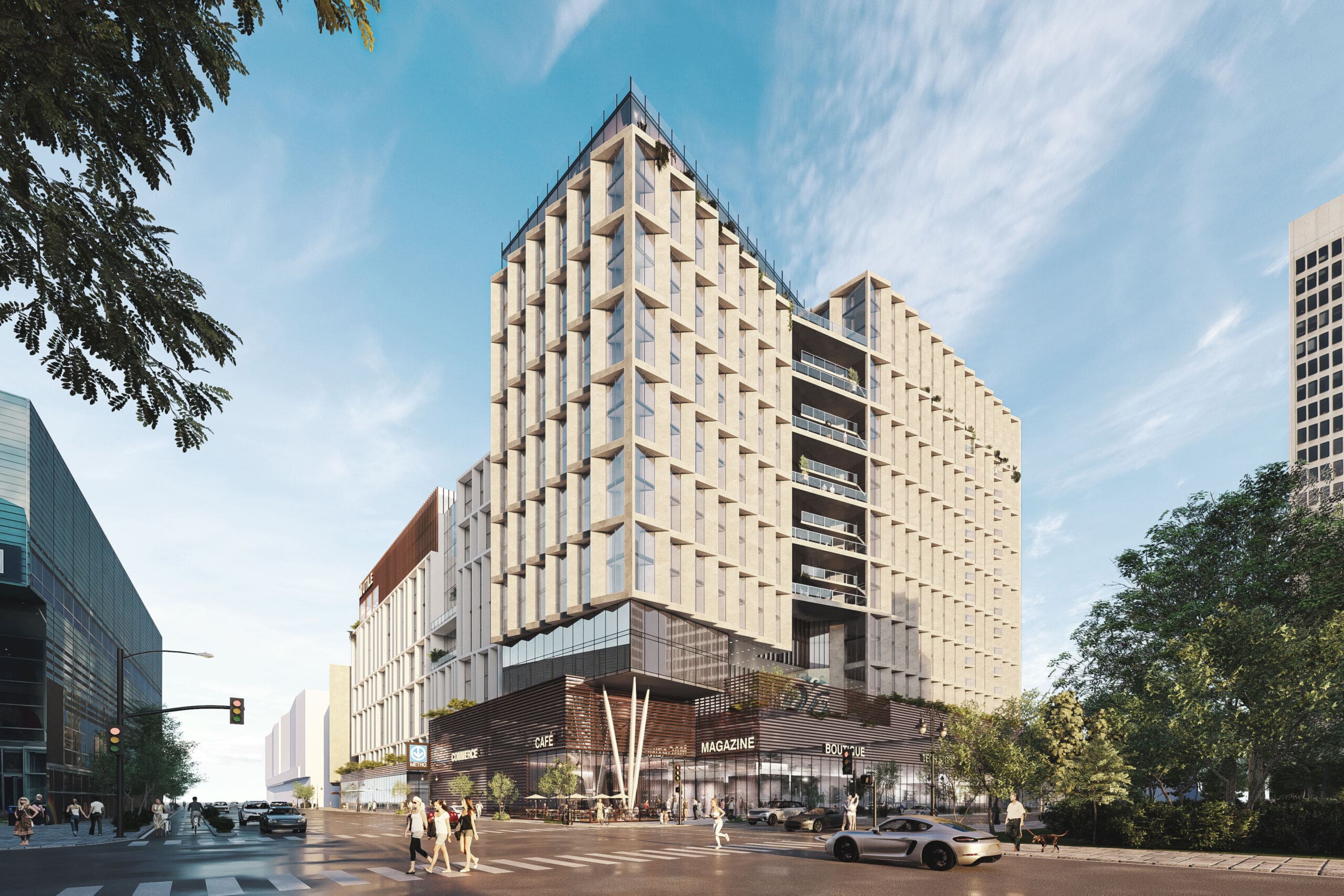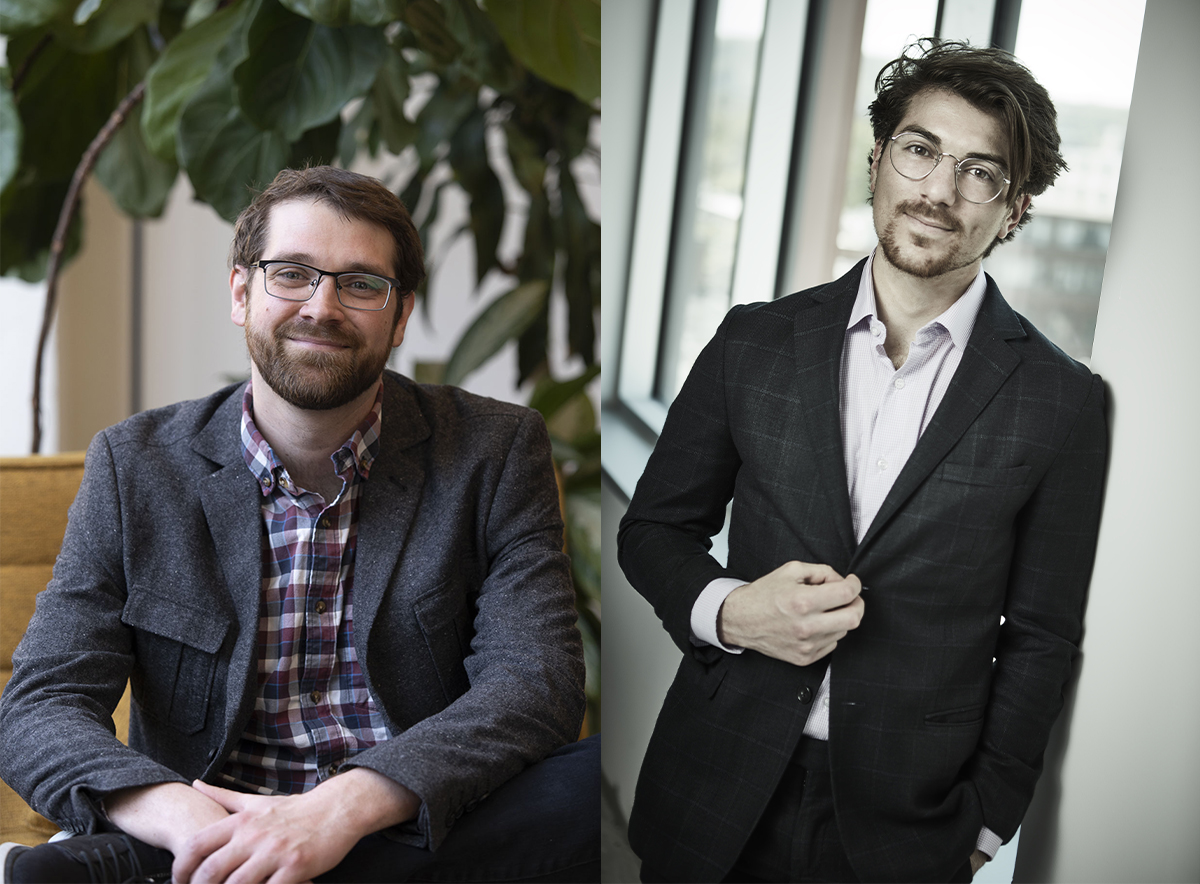Private developer joins forces with non-profit team to outbid the competition and build social housing in Montreal
Why It Matters
A lack of affordable apartments and property speculation hamper efforts to quell the housing crisis. New partnerships could help solve some old problems.

Located above a bus terminal and subway station, the decrepit L’Îlot Voyageur has been a blight on the Montreal landscape for over two decades, leaving some to wonder if the property is simply cursed.
In the early 2000s, the nearby Université du Québec à Montréal (UQAM) initiated a student housing project on the site.
The project not only failed, it nearly bankrupted the institution.
The provincial government then spent millions to pay off the university’s debt before buying the building from a private owner with the intent of installing Revenu’s Quebec offices.
That project was also abandoned.
In 2018, the City of Montreal also tried its hand at developing the site, paying $18 million to acquire it.
A private developer bought the northern section—where UQAM had once planned student housing—and built condos.
However, nothing happened on the site’s southern portion until March 2024, when the city put the land up for sale with a reserve price of $20 million; below market value.
The catch? The purchaser must build social and affordable housing on the premises.
Two groups rose to the challenge.
The first contender was Prével. Headed by Laurence Vincent since 2017, the 45-year-old company had already developed 12,000 units in and around Montreal.
But the other bid came from Mondev, a two-generation family business, and L’UTILE, a non-profit specializing in student housing.
The 546-page tender initially excluded consortiums, but with few expressions of interest, the prohibition was subsequently lifted.
Those who work in property development said the lengthy list of requirements and restrictions put off many potential investors.
Expertise lacking
“As a private developer, we do not have the expertise or the connections to build social housing,” said Jordan Owen, a junior partner at Mondev.
Montreal’s diverse metropolis bylaw requires private developers to include affordable, social, or family housing.
“We do not have to build the units ourselves. We can buy a piece of land, decontaminate it, prepare it for construction, or buy a building and then sell it to the City so they take care of the social, affordable or family units,” said Owen.
The bylaw allows for three options.
The developer can build social, affordable, or family housing. Or they can buy land near the initial project, prepare it for construction, and sell it to the city, which then establishes housing on the site.
The last option is to pay a fee to the city for not contributing to affordable, social, or family housing. This fee then helps finance Montreal’s social housing program.
However, the Îlot Voyageur project is different. The tender clearly states that the developer must build affordable and social housing units. Paying a fee isn’t an option.
That is why Mondev reached out to l’UTILE.

“Neither of us can complete such a huge mixed project alone,” said Owen.
Future of Good met with representatives of the two real estate organizations forming this unusual partnership: Jordan Owen, senior partner and a family member of Mondev, and Maxime Pelletier, Deputy Director of Government Affairs for L’UTILE.
Here’s what they had to say:
Question: L’Îlot Voyageur is rooted in l’UTILE’s history. Can you tell us how?
Maxime Pelletier: L’UTILE was created in 2012 during the historic student strike known as the “Maple Spring.” Thousands of students protested the rise in student fees between February and September.
The daily protest route passed in front of l’Îlot Voyageur. The repetitive sight of this abandoned building inspired a group of urban planning students to find a non-profit that would create housing by and for students.
Twelve years and five projects later, l’UTILE gets a chance to return to the project that ignited the spark.
Question: Did Mondev have a relationship with L’UTILE before creating the consortium?
Jordan Owen: Mondev sold a piece of land to L’UTILE a few years ago, but that is all.
Question: A partnership between a private developer and a housing non-profit is unusual. What made you think it could work?
Maxime Pelletier: First, Mondev already works in this neighbourhood and is interested in revitalizing it. Moreover, like us, Mondev operates the rental properties it develops, which is not the norm in the real estate development sector. It gives them an extra incentive to create high-quality, sustainable projects since they remain the owners afterward.
Jordan Owen: Our model is not a standard model. Most private developers have a small stake in the game, maybe five per cent, and they raise the rest. Upon completion, they sell the building to an institutional investor, like a pension fund.
Question: Should private developers include social and affordable housing in all their projects?
Jordan Owen: A private developer must pay a fee not to build social housing. But that cost can’t be too high, or the developer can’t do the project.
There is a sweet spot between the amount you can charge a private developer and the subsidy you can attribute to non-profits to help balance everything.
Question: Did the City of Montreal specify they wanted student housing on the site?
Maxime Pelletier: No, it did not. But this central district, known as “Le Quartier Latin,” is deeply devitalized. The student population is ideal for revitalizing a neighbourhood. They don’t drive, buy locally, and like to go out at night to enjoy cultural activities. And they’re out on the streets in the evening, even at night. It brings life back.
Question: The tender specified 700 units; your consortium proposed 1000 units. Mondev will build between 500 units, and l’UTILE will concentrate on 400 affordable student units and 100 social housing units. What is the difference between affordable housing and social housing?
Maxime Pelletier: The stakeholders do not agree. For this project, we used the definition of the City of Montreal.
The rent scale of the Habitation Affordable du Québec program defines social housing. Rents below this grid operated by a non-profit qualify as social housing.
Question: Who is the clientele for the social housing units included in your project?
Maxime Pelletier: We partnered with a non-profit called La Maison des gens de lettres. They lobbied for many years for units dedicated to literary sector workers. They eyed l’Îlot Voyageur because it is opposite Montreal’s main library, La Grande Bibliothèque. L’UTILE will build the 100 units and sell them to La Maison des gens de lettres, which will own and operate them.
Question: How will the financial part work?
Jordan Owen: It is entirely separate. L’UTILE is responsible for their stuff, and we’re responsible for ours. Mondev is self-financed; we get bank loans.
Maxime Pelletier: Our funding sources are more diversified than the average non-profit. For instance, they include student associations.
Question: Your consortium offered $22.5 million for the land. Will both partners foot half of the bill?
Jordan Owen: No, Mondev will pay more. For instance, we will take care of the site preparation and decontamination.
Question: What problem are housing partnerships addressing?
Jordan Owen: They deliver more units across the housing spectrum.
We need more affordable, social, and market housing. Building just one type will not solve the housing challenge. Partnerships seem more efficient than getting the land and finding a non-profit to do the project.
Maxime Pelletier: Partnerships have the potential to create more mixed-use housing.
Our proposal includes 500 non-profit units, making up 50 per cent of the project. Montreal plans to develop three critical sites in the coming years: the ex-racetrack in midtown (Projet Galoph), Louvain-Est in the North, and Bridge-Bonaventure between downtown and Old Montreal. Projet Galoph could produce 10,000 units. Imagine the impact if half of them were off-market.
Question: Louis-Philippe Myre, the general manager of Interloge, a prominent Montreal non-profit managing 925 social and affordable units, identified three solutions to create more social and affordable housing with government money.
First, build portfolios of units, not projects, for economy of scale. Second, encourage co-development between non-profit and private promoters. Third, non-profit equity can be used to raise capital. Does this sum up to the idea that “bigger is better”?
Maxime Pelletier: We have no choice. Instead of setting numerical targets for non-market housing, more and more cities are putting forward a proportion.
When 20 per cent of a neighbourhood’s housing is off-market, it’s not just residents who win. It calms prices in the rest of the market. But 20 per cent is massive, considering that barely three per cent of housing is off-market in most cities.
So yes, we need to build hundreds of affordable and social units at a time.
Question: What does it imply in the real estate non-profit sector?
Maxime Pelletier: First, we must acquire the private sector’s efficiency and agility. But in the end, we keep our rents low instead of making a profit. Second, the non-profit housing sector must pool billions of real estate assets to access significant financing. In Quebec, the sector’s stakeholders formed l’Achat to reach this goal.
Question: If you win the bid, what will be the biggest challenge to complete the project?
Jordan Owen: The pacing. Mondev and L’UTILE have to get all their permits at the same pace.
There are many layers, and we must complete the project within an acceptable timeframe. A consortium is a relevant solution to building more units across the housing spectrum if the partners do it all simultaneously. Thus, we can share resources, like subcontractors.
Question: And can limit scaling this solution?
Maxime Pelletier: It is the regulation. L’UTILE was created because the student population was not included in the non-profit real estate financing programs. Since then, the regulation has evolved.
I anticipate a similar situation for consortiums like ours. The federal, provincial, and municipal governments must adjust regulations and subsidy programs to accommodate this new reality.
Question: What soft skills are required from the non-profit sector and private real estate to ensure successful partnerships?
Maxime Pelletier: Under current circumstances, it’s difficult for anyone to build housing units. It’s difficult for non-profits who want to offer low rents. It’s hard for private developers who want a viable project to get off the ground.
We must sit down and see what we can contribute to make the project happen. Each partner must be ready to go where it allows the other to be viable.
Question: Should private developers be responsible for including social and affordable housing in their projects?
Jordan Owen: A private developer must pay a fee not to build social housing. But that cost can’t be too high, or the developer can’t do the project.
There is a sweet spot between the amount you can charge a private developer and the subsidy you can attribute to non-profits to help balance everything.
Question: Should consortiums like yours replace the actual solution, including social and affordable housing in private projects?
Maxime Pelletier: If our consortium wins the bid for l’Îlot Voyageur, and if it is the model project we envision, we think it is a suitable method for developing mixed-use sites.
Is the non-profit real estate ecosystem ready? Is the regulatory system able and willing to adapt? Is there a financial capacity to finance these units? Not yet. But I feel a willingness to explore this model.
Question: The mayor of Laval, Quebec’s third largest City, said he is open to his city owning social and affordable real estate. Is that a relevant solution to the housing crisis?
Jordan Owen: It is one scenario. Cities could build up their real estate team to operate their housing non-profit.
But municipal governments could also act like brokers. Most cities have underused public land that could be put up for better use. Instead of collaborating with non-profit and private developers on a case-by-case scenario, why don’t they reach out systematically to give developers a chance to bid?
(Questions and answers have been edited for clarity.)
